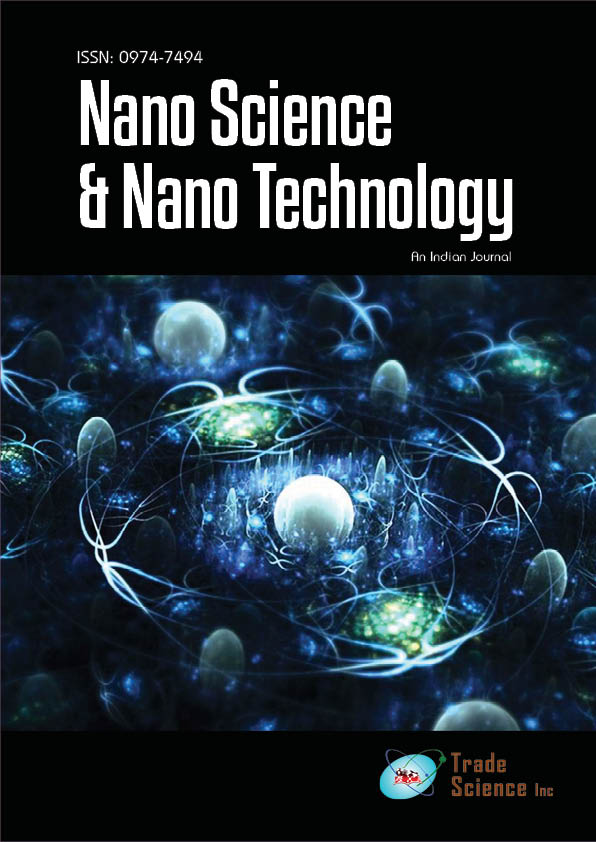Short commentary
, Volume: 16( 2) DOI: 10.37532/ 0974-7494.2022.16(2).146Nano Robots: The Future of Medicine
- *Correspondence:
- Marshall BrownEditorial Office, Nanoscience & Nanotechnology: An Indian Journal, UK,E-mail:info@tsijournals.com
Citation: Brown M. Nano robots – The Future of Medicine. Nano Tech Nano Sci Ind J. 2022;16(2):146.
Abstract
Nano-device production has been steadily increasing as a result of breakthroughs in nanotechnology. The first operational biological Nano-robots are likely to develop in the next 5 years, and more complicated diamonded-based Nano-robots in roughly 10 years, thanks to recent advances in nanotechnology and recent breakthroughs in biotechnology and genetics. In terms of time, it indicates a far brighter future with tremendous advancements in medicine. In the coming decades, the primary focus in medicine will change from medical research to medical engineering, with the construction of therapeutically active microscopic machines being the consequence of methodologies derived from human molecular structure understandingIntroduction
Nano-device production has been steadily increasing as a result of breakthroughs in nanotechnology. The first operational biological Nano-robots are likely to develop in the next 5 years, and more complicated diamonded-based Nano-robots in roughly 10 years, thanks to recent advances in nanotechnology and recent breakthroughs in biotechnology and genetics. In terms of time, it indicates a far brighter future with tremendous advancements in medicine. In the coming decades, the primary focus in medicine will change from medical research to medical engineering, with the construction of therapeutically active microscopic machines being the consequence of methodologies derived from human molecular structure understanding.
Theory of nanorobotics
Many science fiction stories include nanorobot swarms, both ones that are incapable of replication (such as utility fog) and those that are capable of uncontrolled replication in the natural environment (such as grey goo and its less frequent forms), such as the borg nano-probs in Star Trek. The phrase "nanobut" (sometimes "nanite", "nanogene", or "nanoant") is frequently used to refer to this fictitious material and is a colloquial or even derogatory name for the technical idea of nanorobots. Some nanorobotics experts believe that nanorobots capable of replication outside of a controlled factory environment are not required for purportedly productive nanotechnology and that the process of self-replication if ever developed, could be made inherently safe. Nanorobots for in-vivo chemical parameter monitoring should speed up strategic choices greatly.
Elements of nanorobots
Because of their strength and chemical inertness, carbon will most likely make up the bulk of a medical nanorobot in the form of diamond or diamonded/ fullerene nanocomposites. Other light elements, such as oxygen and nitrogen, can be employed for certain applications. A blood-borne medical nanorobot's normal size will be 0.5 µm-3 µm, as this is the greatest size that can be allowed owing to capillary passage requirements. These nanorobots would be made in desktop nano-factories dedicated to this task.
Approaches
Biochip: The combination of nanoelectronics, photography and novel biomaterials might be a solution to provide the requisite manufacturing technology for nanorobots in common medical applications such as surgical instruments, diagnostics, and medication delivery. This nanotechnology-based manufacturing approach is now in use in the electronics sector. As a result, realistic nanorobots should be incorporated as nanoelectronics devices, allowing teleoperation and increased capabilities for medical instruments.
Nubots:The term "nucleic acid robot" is abbreviated as Nubot. At the nanoscale, nubots are organic molecular machines. Molecular machines based on biological circuit gates based on DNA materials have been developed to provide in-vitro medication delivery for specific health issues.
Bacterial based
The utilization of biological microorganisms such as E.coli bacteria is proposed in this technique. As a result, the flagellum is used to propel the model. Normally, electro- magnetic fields are used to regulate the mobility of this type of biologically integrated gadget.
Positional nano-assembly
The Nano-factory Collaboration, which was founded by Robert Freitas and Ralph Werkle in 2000, is a focused ongoing effort involving 23 researchers from 10 organisations and four countries who are working to develop positionally-controlled diamond mechanosynthesis and a diamondoid nano factory capable of producing diamondoid medical nanorobots.
Applications
Nanorobot applications are likely to open up a world of possibilities. Nanorobots might be attached to transmigrating inflammatory cells or white blood cells to reach inflamed areas and aid in the healing process. Early cancer detection and tailored medication administration are two potential uses for nanorobotics in medicine. Pharmacokinetics monitoring of diabetes, health care, biomedical instrumentation. As an auxiliary device for wounded organs, they can process certain chemical processes in the human body. Nanorobots will be used in chemotherapy to fight cancer by delivering exact chemical dosages, and a similar method might be used to enable nanorobots to distribute anti-HIV medications. The drug-delivery nanorobots are referred to as "pharmacies." Nanorobots with nanosensors might be utilized to monitor glucose demand in diabetics. They can detect atherosclerotic lesions in stenosed blood arteries, especially those in the coronary circulation, and treat them mechanically, chemically, or pharmacologically.
Nanorobots offer the world of medicine exciting prospects for diagnosis and therapy help.

